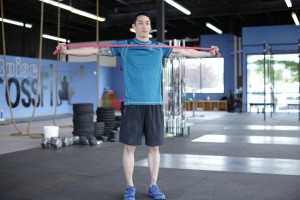Shoulder pain can affect much more than just our comfort. It can limit our ability to pick up our children, carry groceries, or even reach for something on a high shelf. If you’ve been struggling with nagging shoulder pain, there’s a strong possibility it may be due...
A stress fracture is a small crack within a bone. However, unlike acute fractures, which occur from a sudden injury, stress fractures gradually develop over time and are common among athletes, runners, and individuals with physically demanding lifestyles. These tiny,...
Tendons are tough, fibrous tissues that connect muscle to bone and play a critical role in our movement, from helping us swing a tennis racket to allowing us to lift groceries or climb the stairs. But for all their strength and flexibility, tendons are also...
Good and Bad Exercise Machines After Shoulder Surgery

Shoulder surgery can be performed for a number of reasons, either as a preventative or a repair of an existing injury. It is tempting to believe that once you have been pain-free for a while, you can return to your normal gym exercise routine. With that being said, you should be aware of what you can do and what will simply re-introduce or worsen your injury.
When to start exercising again?
About 12 weeks after surgery is the soonest you should even consider doing any sort of light resistance exercise such as exercise machines, dumbbells or barbell weights. You should already be doing a number of rehab exercises in the meantime and have full range of motion in the injured shoulder before starting any sort of resistance program. If you’re in doubt, speak to your orthopaedic surgeon or physiotherapist. Take it slowly the first couple of sessions; it’s a common mistake to add too much weight too early, which can weaken the shoulder further and delay your progress. Start with very light resistance and listen to your body, sharp pain is never acceptable and if you experience any such pain stop the exercise and take a few days off.
Exercise machines or free weights?
There are plenty of exercise machines that target the shoulder area, including dip machines, press machines and even bicep curl machines. However, machines have a very limited range of motion can put additional stress on the joint due to an unnatural path that has to be followed. Instead of using exercise machines, consider using dumbbells as part of your shoulder rehab program. A good program should work on both improving flexibility in the shoulder as well as strengthening the shoulder and rotator cuff. The type of exercises you should be doing focus on strengthening the muscles around the shoulder while not placing additional stress on the joint.
Sample exercises
The following are some simple dumbbell exercises that can be added to your shoulder rehab routine. Again, make sure you start with very light weights, and stop at the slightest feeling of sharp pain. If you’re uncertain whether you should be embarking on a free weight routine, speak to your orthopaedic doctor or physiotherapist before doing any of these exercises:
Retractions and protractions: Retraction refers to pulling your shoulder blades together, while protraction refers to the motion of extending your shoulder blade. Set up as by bracing your off-hand on a bench and bending at the hips, then take a light dumbbell and keeping your back and arm straight, retract your shoulder blade, hold, then relax. Protractions are done by lying on the bench, arm in the air and extending the shoulder upwards, away from the bench.
Cuban rotations: Doing these will help improve mobility in your shoulder joint. Start with two light dumbbells at your side and your forearms perpendicular to your arms. Raise your arms, and then raise your forearms until they are perpendicular to the floor, keeping your elbows bent at 90 degrees.
Band exercises: Pull-aparts, dislocates and presses can also help with your shoulder recovery without too much strain on the joint as they are very light resistance exercises and tend to focus more on stretching out the muscles and improving flexibility rather than building strength. Most of these exercises will work on scapular retraction and protraction.
Exercise machines are not ideal for people recovering from shoulder injury as they tend to force an unnatural motion path, putting strain on the joint. Rather, do range of motion and exercises that increase shoulder strength and mobility either through dumbbells or bands and always use light weights. For more information about shoulder surgery and recovery, download our free eBook, The Pre-Operative Guide to Shoulder Surgery.


